Daejeon is a largely unvisited city, despite its metropolitan designation and central location. Many people are under the misunderstanding that there is nothing unique about the city, and it is therefore unworthy of their time. However, if you do take the time to visit, you’ll quickly realize that the lack of flashy attractions is precisely what makes Daejeon special; you’ll find yourself discovering more about who you are while exploring the city.
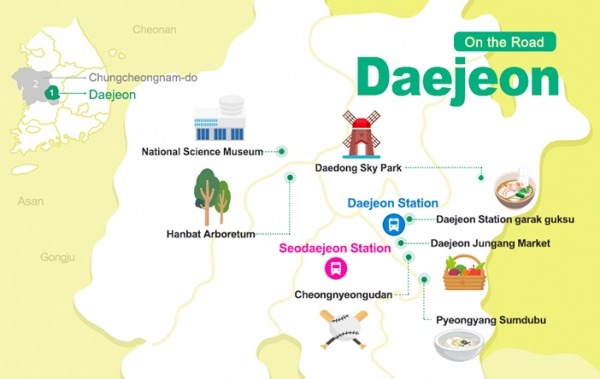
Hanbat Arboretum

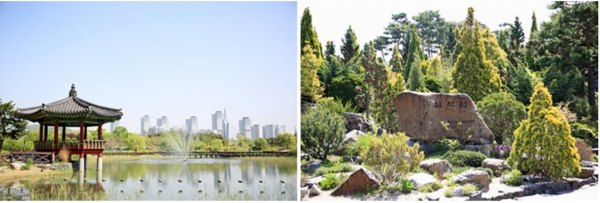
Hanbat Arboretum is a beautiful green space in the city, and is the largest man-made arboretum in the nation. The name Hanbat comes from the old name for Daejeon, meaning “a large collection of fields.” The park is divided into the East and West Gardens, with Expo Citizen’s Plaza in the middle. The West Garden focuses on pine, willow, and oak trees, as well as shrubbery. In comparison, the East Garden offers a rock garden, water garden, ground fountain, observatory and more. The park serves an important role for nature research, in addition to being a citizen’s park, drawing in over 900,000 visitors each year.
National Science Museum
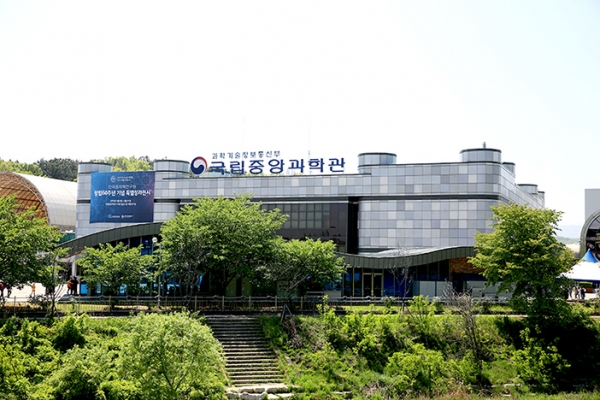

Daejeon is known as “the city of science,” so it’s only fitting that a trip here include a visit to the National Science Museum. The museum has free exhibition spaces, along with four special exhibition halls, requiring paid admission. One of the special exhibitions focuses on the science behind magnetic levitation, and visitors can actually ride on a maglev train! In the Dino Hall, visitors can come face to face with a complete triceratops skeleton! It’s easy to tell it’s a real skeleton and not a replica, due to the complex structure of wires holding the bones together.

Daedong Sky Park

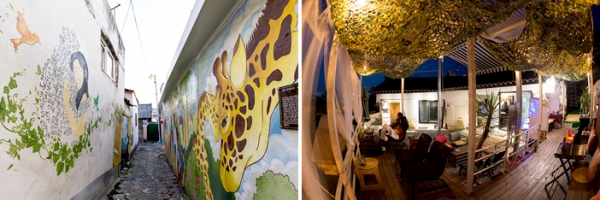
From Daedong Sky Park, you can see Gyejoksan Mountain to the southeast and Bomunsan Mountain to the northwest for a panoramic view of the city. You can see ever-changing scenery day and night, making this attraction a hidden gem of the city. There are also many things to enjoy around the park, including the Love Rock, the hilltop windmill, and coffee shops past the mural village.
Daejeon Jungang Market
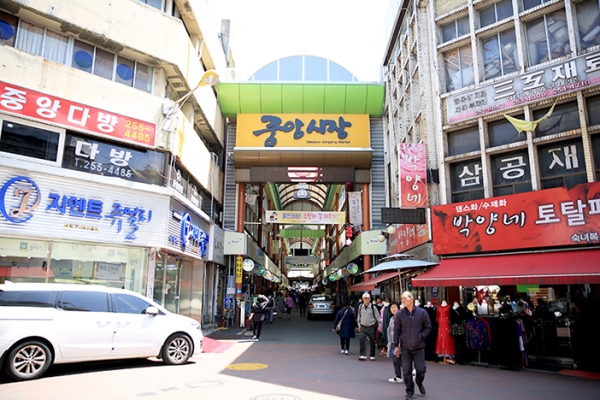

If you want to see the true character of a traditional market, look no further than Daejeon Jungang Market. A short five-minute walk from Daejeon Station, the market is the largest traditional market in the central region. The market is comprised of many specialized markets, including the Jungang General Market, Jungang Shopping District, Jayu Wholesale Market and more; you could nearly fill a whole day with exploring all the shops and stalls. For a light snack, try some of the street foods, including sundae (blood sausage), hotteok (sugar-filled griddlecake), oden (fish cake), mandu (dumplings), gimbap, janchi guksu (noodles in broth), and nurungji (scorched rice).
Daejeon Cheongnyeongudan
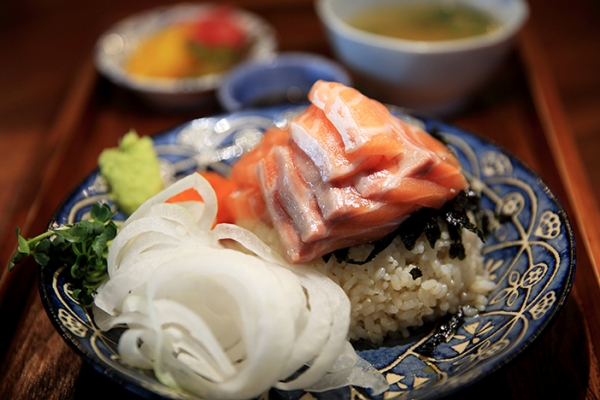

Cheongnyeongudan rises to fame after appearing in the TV program, “Baek Jong-won’s Alley Restaurant,” where Baek Jong-won, a Korean celebrity chef, helped them attract customers through menu improvement. The two main dishes are the Monkey burger and yeonppap (raw salmon over rice). The saeu hobak jeon (shrimp and sweet pumpkin pancake) is also worth trying. Using shrimp powder instead of flour, the pancake has a less viscous consistency, but this allows the full flavor of the sweet pumpkin to shine. Because Cheongnyeongudan is still in the early stages of operation, they close at 9PM, although they are often subject to early closure when ingredients sell out; if you want to try their food, be sure to arrive early!
Address: Mega Plaza 3F, 99, Jungang-ro 200beon-gil, Dong-gu, Daejeon (대전광역시 동구 중앙로200번길 99 메가프라자 3층)
Pyeongyang Sumdubu


While most places have sundubu (soft tofu), Daejeon sells Pyeongyang Sumdubu! The name comes from the North Korean Hwanghae-do dialect for sundubu. The restaurant has passed through three generations of one family, holding true to the original taste.The base menu is sumdubu and rice, and guests can create the flavor they prefer by controlling the amount of seasoning. Likewise, the side dishes of oi ji (pickled cucumbers), baechu geotjeori (fresh kimchi), and kkakdugi (diced radish kimchi) seem rather simple at first, but their taste is truly addictive!
Explore more at english.visitkorea.or.kr


